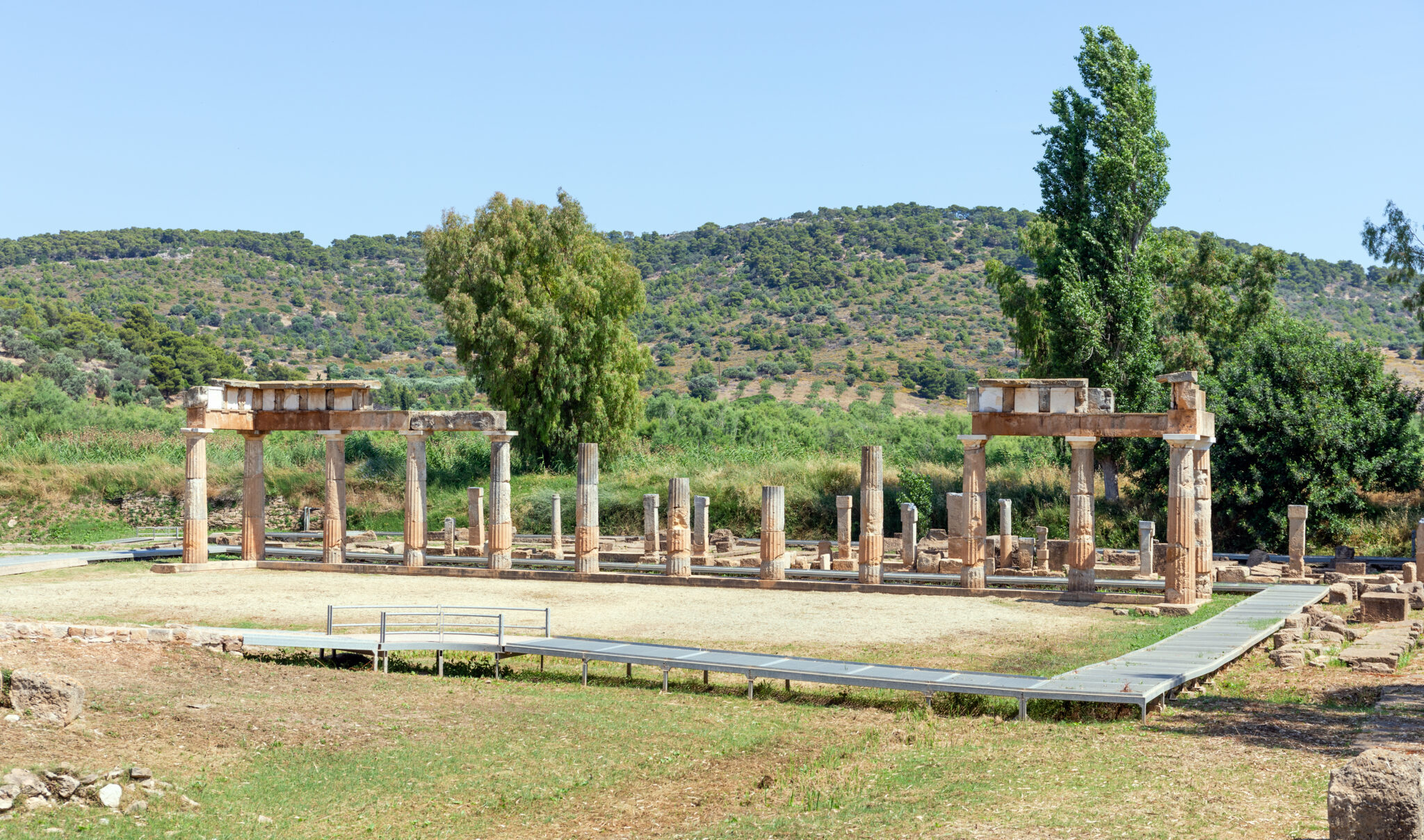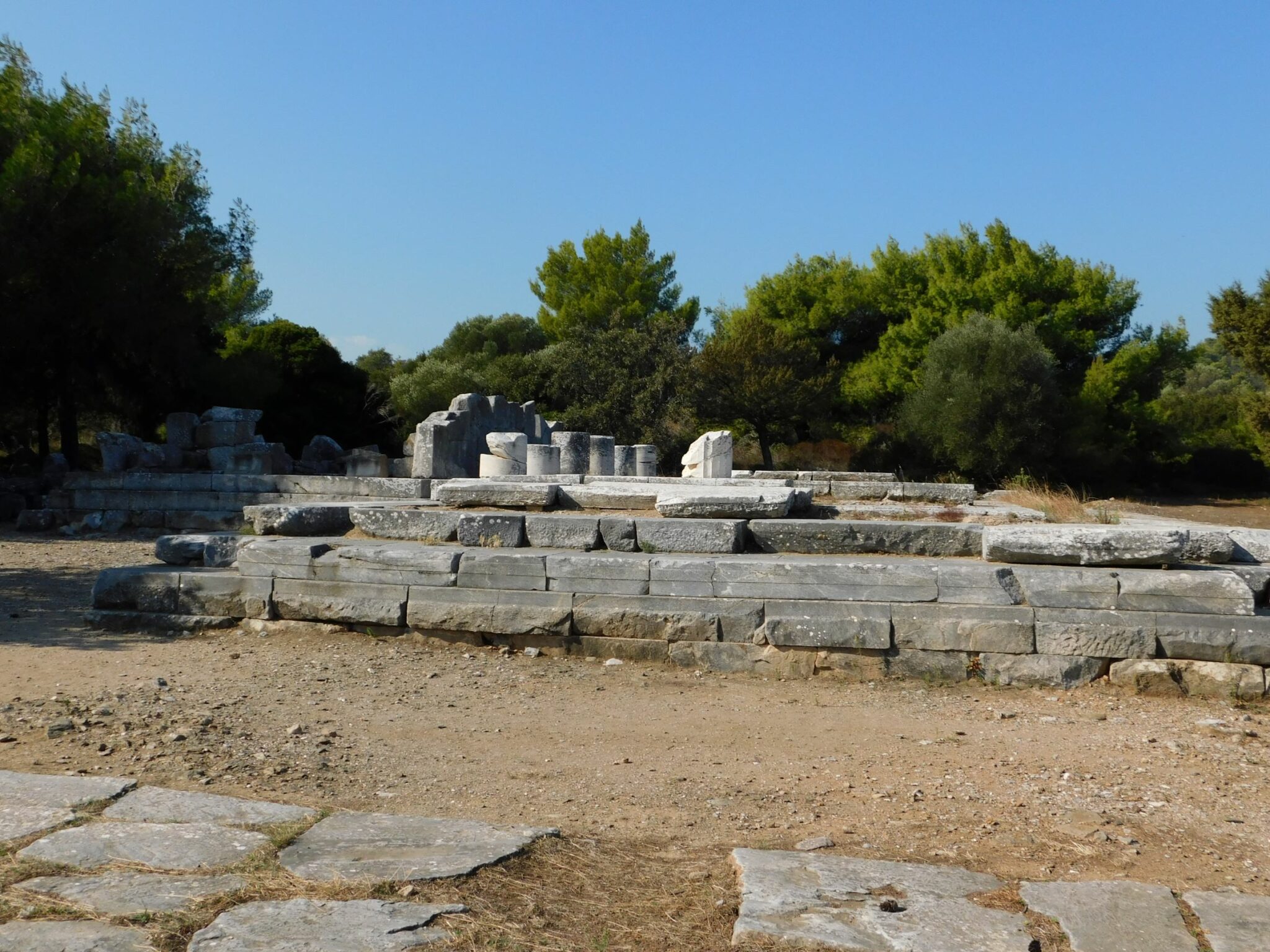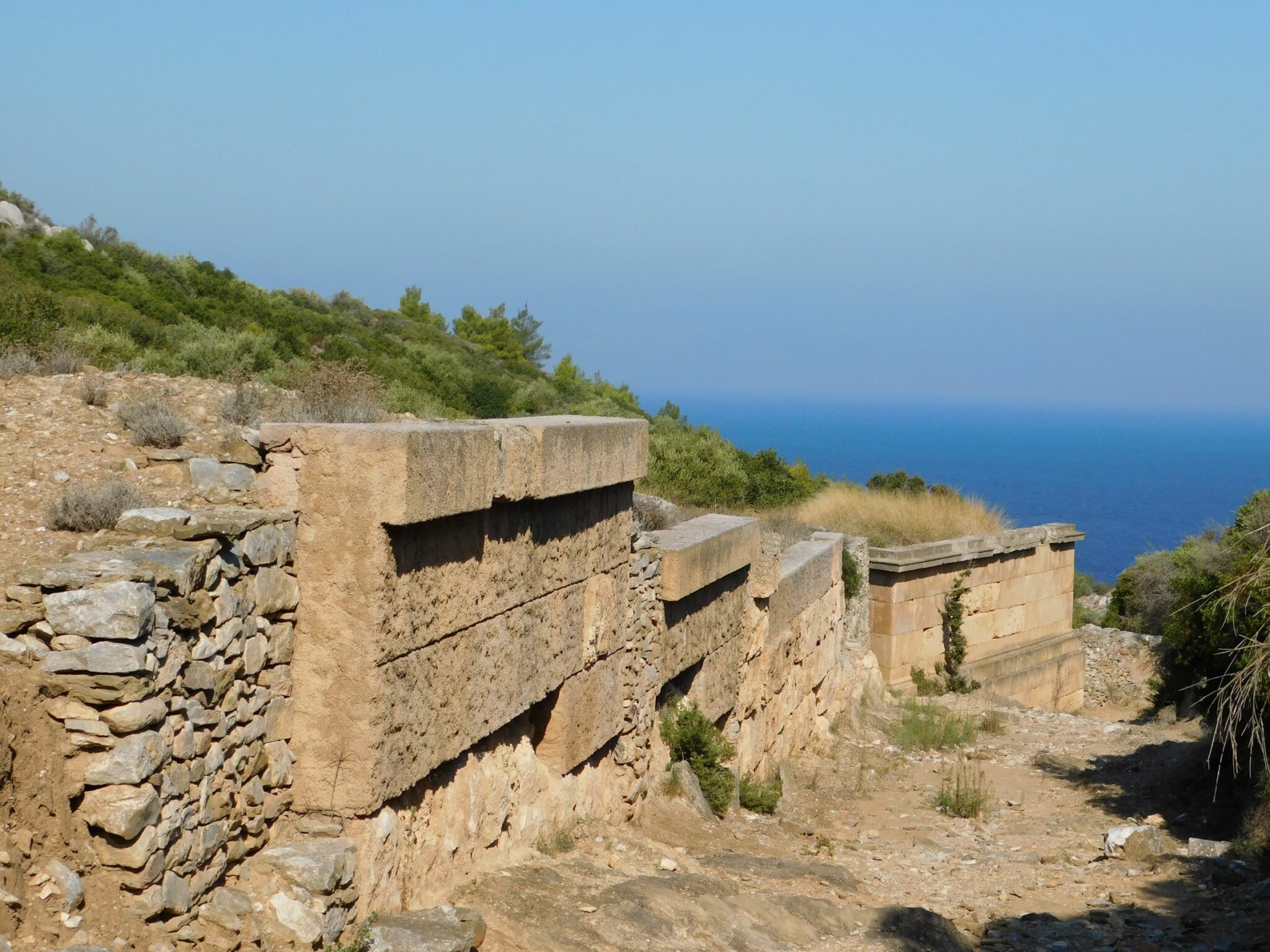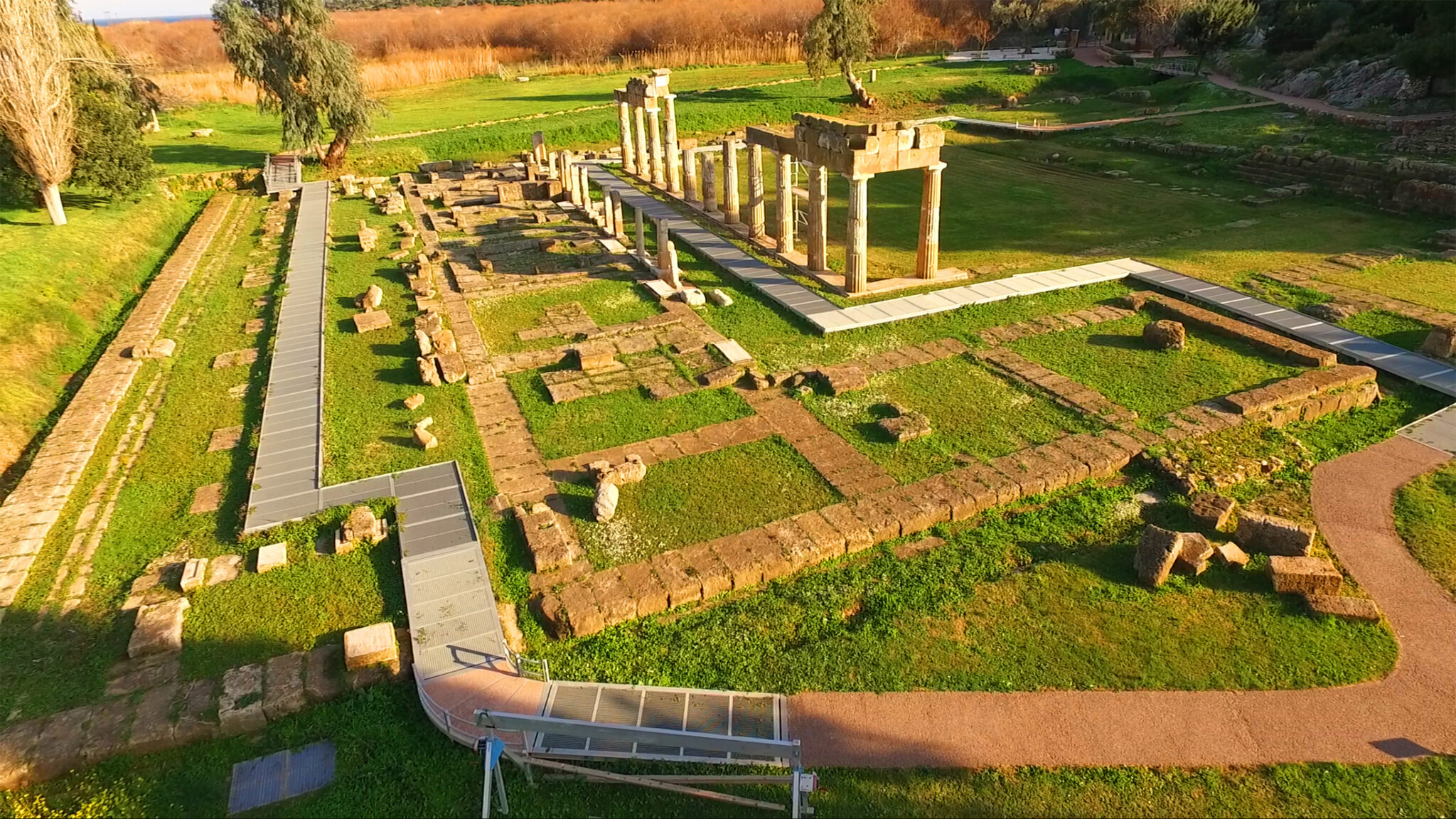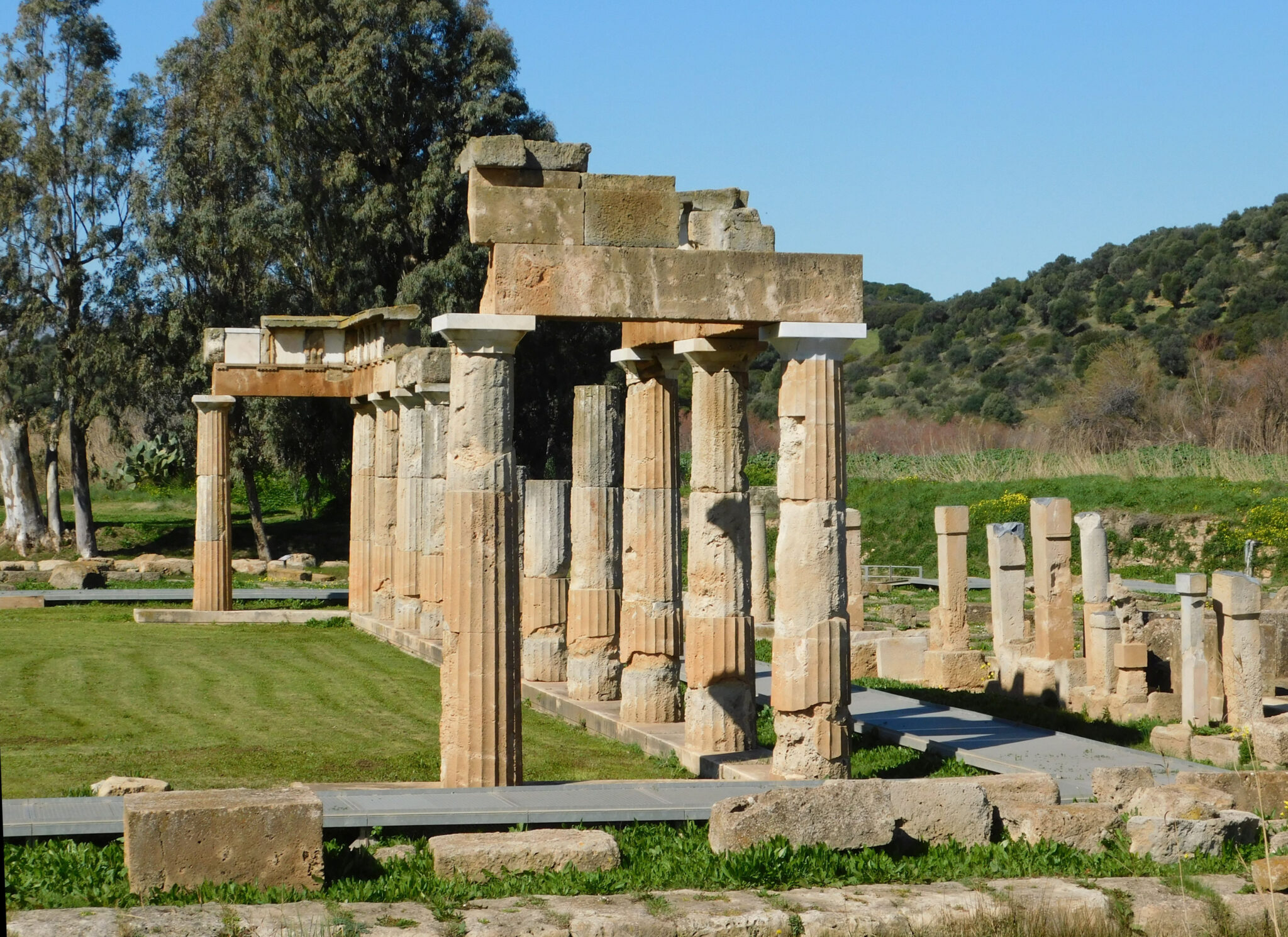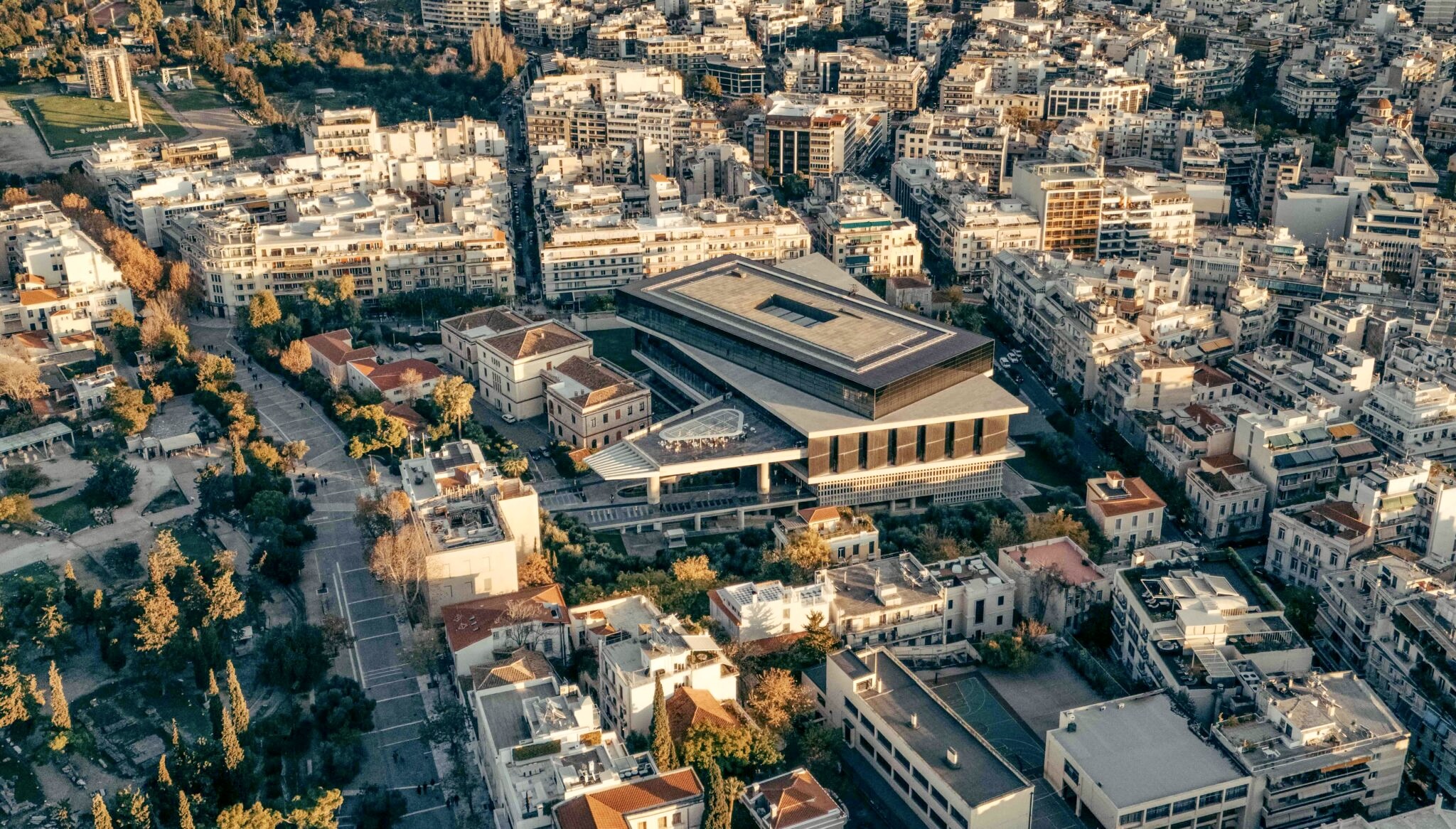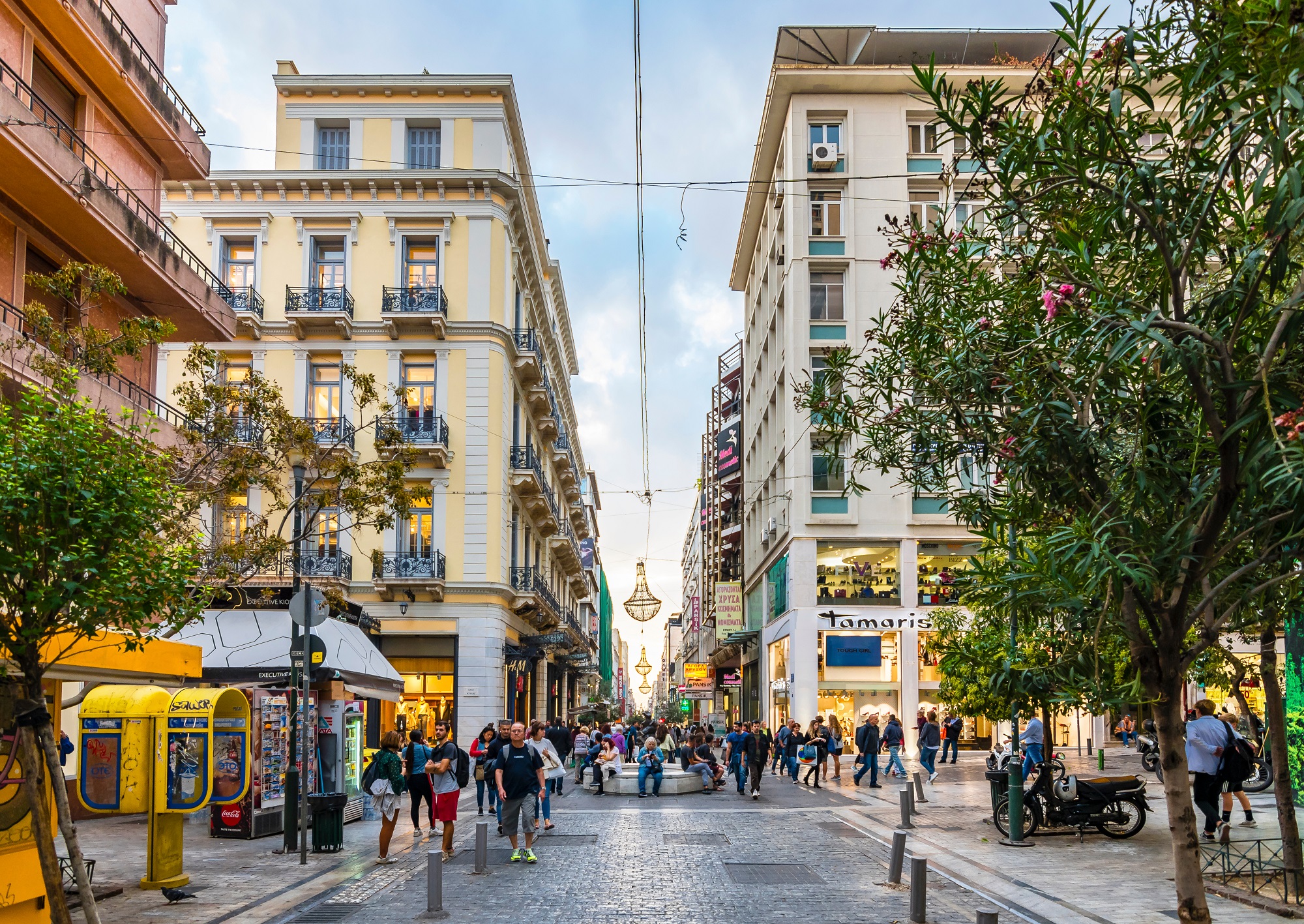Attica is full of important archaeological monuments, including the archaeological sites of Ramnous and Brauron with two of the most venerable sanctuaries of their time, those of the goddess Nemesis and the goddess Artemis.
Each of them has its own remarkable history, which you can discover by taking a beautiful walk in the seaside countryside of Attica –a safe and attractive multi-dimensional destination that offers unforgettable experiences throughout the year.
Ramnous Archaeological Site
The fortress and the settlement of Ramnous are spread on top of a hill in the valley of Limikos overlooking the sea in the northeast of Attica. The area was an outlying municipality of Athens inhabited by one of its 10 tribes, the Aiantis, and is the best preserved settlement in Attica. The fortress is built at a strategic point from which the Athenians could control the passage of ships carrying grain to Athens. It is estimated that it was built during the Peloponnesian War, as was its counterpart at Sounion. It probably took its name from the plant ramnos (thorny shrub) that grows in the region even today. According to findings in the area, Ramnous was inhabited since the Neolithic era.
In the same area lies the sanctuary of Nemesis, which is the most important temple of the deity in Greece. It was most likely founded in the early 6th century BC and flourished during the 4th and 5th centuries BC. The Archaic temple of Nemesis, built of porous limestone in Doric style, was destroyed by the Persians in 480 BC and in its place a new temple was later built next to the original one. The new temple was a Doric pavilion with six columns on the narrow sides and twelve columns on the long sides with dimensions of 21.40 x 10.05 m. Today only a few parts of this temple survive. Inside there was a statue of the goddess carved in Parian marble by Agorakritos, a student of Phidias. The marble is even said to have been brought by the Persians in order to make a trophy, confident that they would conquer Attica. However, they did not succeed. Their defeat is also seen as divine punishment for their arrogant belief that they would surely defeat Athens.
From the 4th century BC onwards, the site gradually began to be abandoned, but the temple of Nemesis continued to be preserved until the 4th century AD. The destruction of the statue of the goddess Nemesis by the Christians dates back to the end of the same century. Today, along with the fortress and the wall that surrounds the settlement, small sanctuaries, a theatre and a gymnasium are preserved in the area. Below the temple there are two small ports, the eastern and the western, which were used for the ships that controlled the passage of the Euboean Gulf. The excavations also revealed part of the ancient road leading to Ramnous, along which luxurious burial enclosures dating back to classical times and bearing reliefs, aediculae and stelae were found. Next to the temple of Nemesis there was a smaller temple believed to have been dedicated to the chthonic deity Themis, which was originally a treasury and then a sanctuary. The archaeological site covers a fairly large area, so give it time. In order to see the entablature of the temple and the ancient city you must first submit a request to the Ephorate of Antiquities of Eastern Attica. The rest of the archaeological site is open on the following days and hours:
Daily 08:30-14:00, except Tuesdays
Brauron Archaeological Site
On the south coast of Attica, in the area of Brauron, lies the sanctuary of Artemis Brauronia, one of the oldest and most important sanctuaries in Attica. The archaeological site is spread out on a small hill crossed by the river Erasinos. According to legend, in the sanctuary there was a statue of the goddess Artemis, which Orestes and Ifigenia had brought from Taurida by order of the goddess herself. The sanctuary prospered and gained great reputation from 700 BC to the 4th century BC, while its heyday occurred in the second half of the 5th century BC.
The area seems to have been inhabited since Neolithic times, as the location was a key point, facilitating communication with the Aegean islands and Asia Minor. The site began to decline towards the end of the Mycenaean period. Inhabitants began to gradually abandon it from about 1300 to 900 BC, probably due to frequent attacks. When years later the inhabitants began to return to the area, they did not settle in the old settlement, but three kilometres away, behind low hills, so that the town was not visible from the sea.
The oldest temple of Artemis, which was located where the chapel of Agios Georgios is today, dates back to the Archaic period, while the newer one that replaced it was built at the end of the 5th century BC from local porous limestone. Today only some parts of the foundations of the temple are preserved. In the sanctuary, apart from Artemis, Ifigenia, Leto, Apollo and Dionysus were also worshipped. The abundant offerings found and exhibited in the Museum prove the worship of Artemis as a goddess of nature, protector of women in child-birth, infants and small animals. In the centre of the archaeological site rises the Stoa, a building of Doric style which was probably of mixed function, as a festive banqueting hall and as a place of residence for sick children, who were dedicated to the goddess.
Inaugurated in 1969, the Archaeological Museum of Brauron is located next to the archaeological site and features findings from the Sanctuary of Brauron and the wider area of Mesogaia. The entire history of the region unfolds in five halls and an atrium. Among the most important exhibits are the marble “Relief of the Gods” which tells the myth of the foundation of the sanctuary, the votive reliefs of the 5th and 4th century BC with processions of families preparing to make a sacrifice, marble parts of the acrolithic cult statues of Artemis which bore real clothes, and various ritual vessels connected with the worship of the goddess.
Archaeological Site and Museum
Daily 8:30 – 15:30, except Tuesdays



